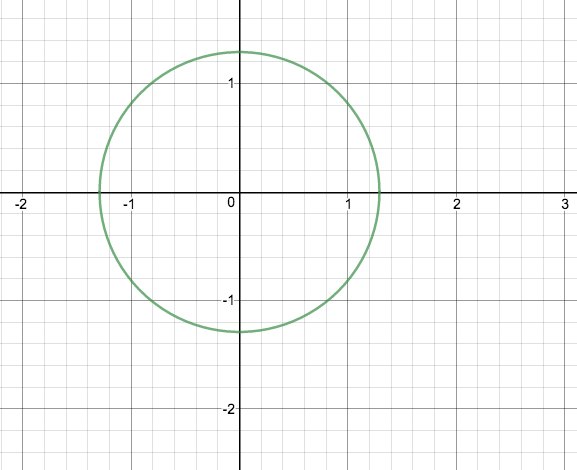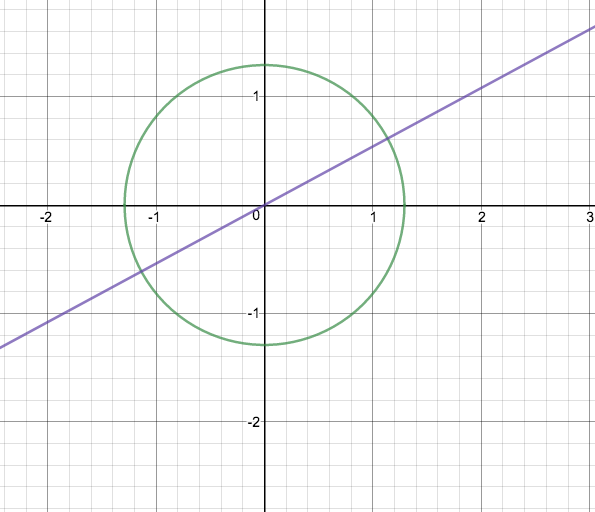How do I identify the symmetry of the graph #(3x^2)+(3y^2)=5#?
2 Answers
(
Explanation:
We can see by dividing by
We know the general equation of a cirlce:
Hence this is a circle of radius,
A sketch:

We can imediately see that when flipped in the

We can also see by this sketch, that any line of the equation
It is a circle, so has symmetry group
Explanation:
Given:
#3x^2+3y^2=5#
Divide both sides by
#x^2+y^2 = 5/3#
That is:
#(x-0)^2+(y-0)^2 = (sqrt(15)/3)^2#
The standard form of the equation of a circle with centre
#(x-h)^2+(y-k)^2 = r^2#
So we can see that the given equation is that of a circle with centre
graph{x^2+y^2=5/3 [-4.4, 4.4, -2.2, 2.2]}
This has reflective symmetry about any line through the centre.
It also has rotational symmetry by any angle about the centre. In fact any rotation can be generated by a combination of two reflections.
The symmetry group of these reflections/rotations is called


